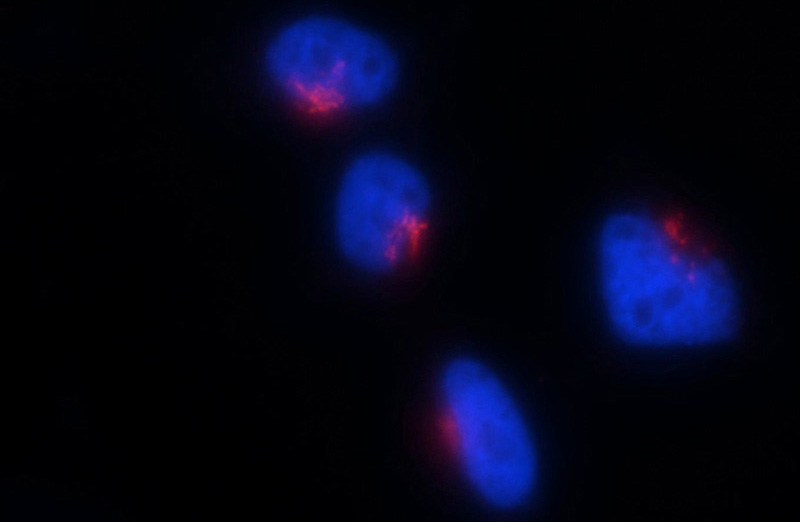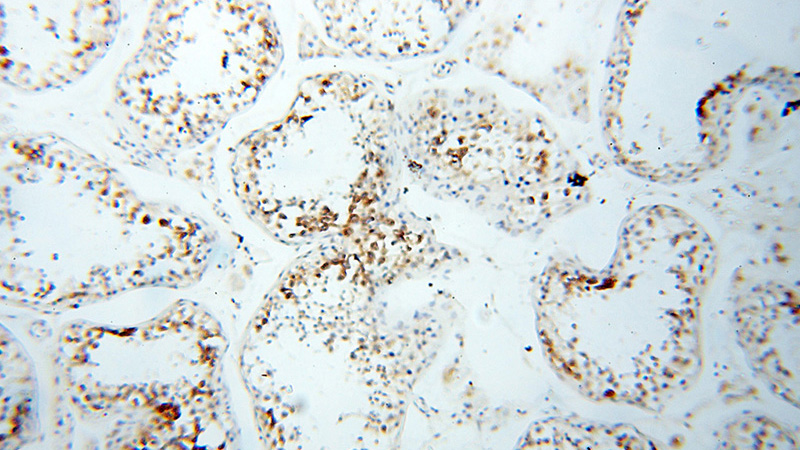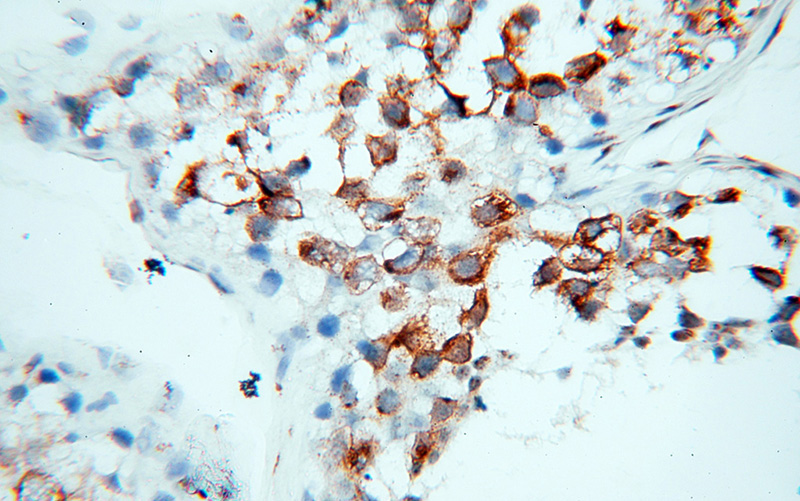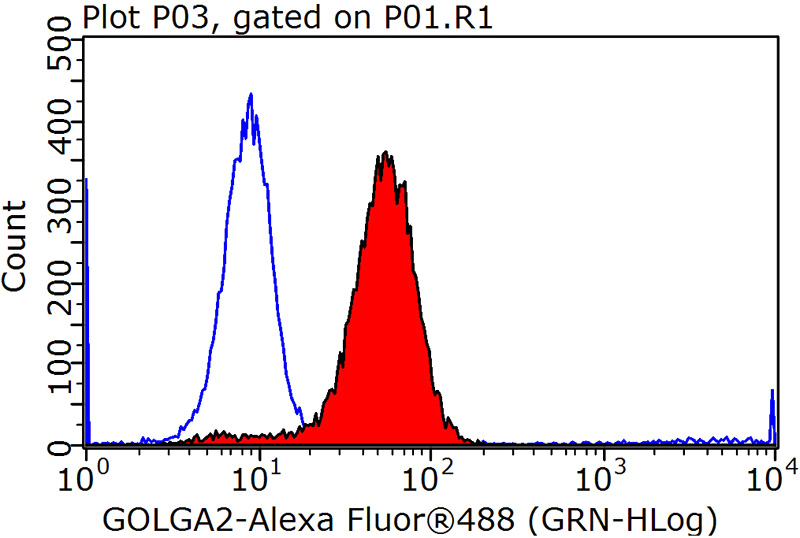-
Product Name
GOLGA2/GM130 antibody
- Documents
-
Description
GOLGA2/GM130 Rabbit Polyclonal antibody. Positive WB detected in HEK-293 cells, human spleen tissue. Positive IHC detected in human testis tissue, human kidney tissue, human placenta tissue. Positive IF detected in HEK-293 cells. Positive FC detected in HEK-293 cells. Observed molecular weight by Western-blot: 130 kDa
-
Tested applications
ELISA, WB, IHC, IF, FC
-
Species reactivity
Human,Mouse,Rat; other species not tested.
-
Alternative names
GM130 antibody; GM130 autoantigen antibody; GOLGA2 antibody; Golgin 95 antibody; Golgin subfamily A member 2 antibody
-
Isotype
Rabbit IgG
-
Preparation
This antibody was obtained by immunization of GOLGA2/GM130 recombinant protein (Accession Number: BC014188). Purification method: Antigen affinity purified.
-
Clonality
Polyclonal
-
Formulation
PBS with 0.1% sodium azide and 50% glycerol pH 7.3.
-
Storage instructions
Store at -20℃. DO NOT ALIQUOT
-
Applications
Recommended Dilution:
WB: 1:1000-1:10000
IHC: 1:20-1:200
IF: 1:10-1:100
-
Validations

HEK-293 cells were subjected to SDS PAGE followed by western blot with Catalog No:111014(GOLGA2,GM130 antibody) at dilution of 1:1000

Immunofluorescent analysis of HEK-293 cells using Catalog No:111014(GM130;GOLGA2 Antibody) at dilution of 1:25 and Rhodamine-Goat anti-Rabbit IgG

Immunohistochemical of paraffin-embedded human testis using Catalog No:111014(GOLGA2,GM130 antibody) at dilution of 1:100 (under 10x lens)

Immunohistochemical of paraffin-embedded human testis using Catalog No:111014(GOLGA2,GM130 antibody) at dilution of 1:100 (under 40x lens)

1X10^6 HEK-293 cells were stained with 0.2ug GM130;GOLGA2 antibody (Catalog No:111014, red) and control antibody (blue). Fixed with 90% MeOH blocked with 3% BSA (30 min). Alexa Fluor 488-congugated AffiniPure Goat Anti-Rabbit IgG(H+L) with dilution 1:1000.
-
Background
GOLGA2, also known as GM130, is a 130 kDa cis-Golgi matrix protein which is one component of the detergent and salt resistant Golgi matrix. It is a peripheral membrane protein highly bound to Golgi membrane and localized mainly at the cytoplasmic face of cis-Golgi membrane. Together with its interacting partner proteins, including p115, giantin, GRASP65, and Rab GTPase, GOLGA2/GM130 is involved in the regulation of ER-to-Golgi transport and also in the maintenance of the Golgi structure. Emerging evidence suggest that the GOLGA2/GM130 has potential roles in the control of glycosylation, cell cycle progression, and higher order cell functions such as cell polarization and directed cell migration. (PMID: 20197635)
-
References
- Fuller SJ, McGuffin LJ, Marshall AK. A novel non-canonical mechanism of regulation of MST3 (mammalian Sterile20-related kinase 3). The Biochemical journal. 442(3):595-610. 2012.
- Yang M, Kozminski DJ, Wold LA. Therapeutic potential for phenytoin: targeting Na(v)1.5 sodium channels to reduce migration and invasion in metastatic breast cancer. Breast cancer research and treatment. 134(2):603-15. 2012.
- Liang B, Peng P, Chen S. Characterization and proteomic analysis of ovarian cancer-derived exosomes. Journal of proteomics. 80:171-82. 2013.
- Ye X, Zhang Y, He B, Meng Y, Li Y, Gao Y. Quantitative proteomic analysis identifies new effectors of FOXM1 involved in breast cancer cell migration. International journal of clinical and experimental pathology. 8(12):15836-44. 2015.
Related Products / Services
Please note: All products are "FOR RESEARCH USE ONLY AND ARE NOT INTENDED FOR DIAGNOSTIC OR THERAPEUTIC USE"
